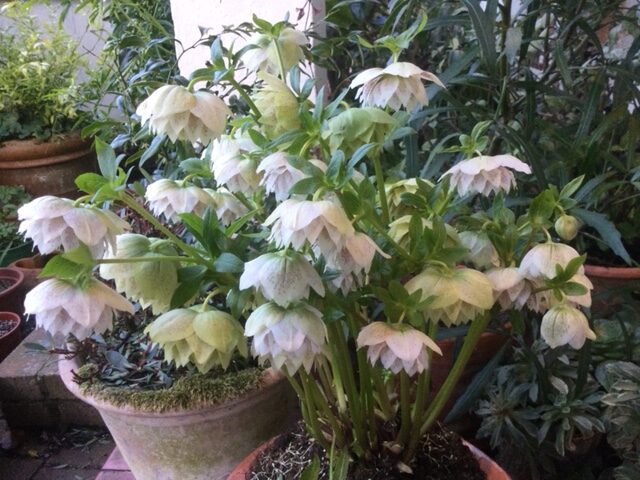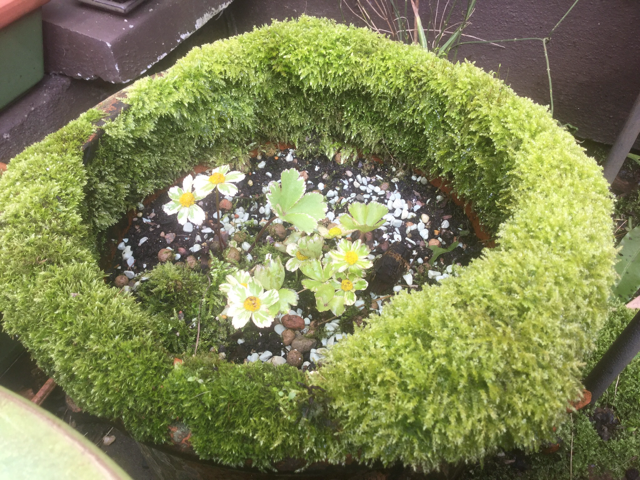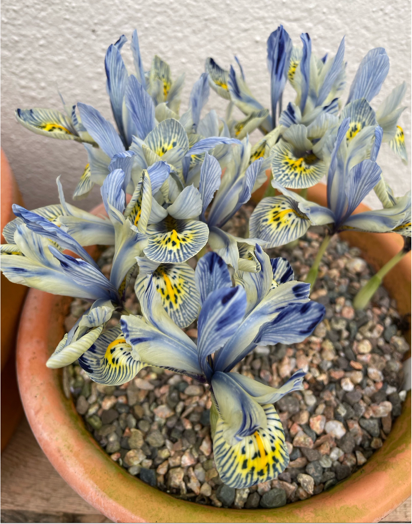March in our Gardens by Philippa Thomas.

There’s something about our spring light that transforms our gardens, when it’s sunny, it lights up everything with a diamond sparkle. Make sure to find time to get outside on a sunny day, wrap up warm. Some people are convinced that we are never out of winter until the middle of March and they will be still cocooned away behind double glazing and electric lighting right through this lovely month. ‘March comes in like a lion and goes out like a lamb’. This is a month of real change. As our weather gets warmer and our evenings get longer, our temperatures should slowly start to creep upwards in the coming weeks and encourage new growth which of course, is irresistible to slugs and snails. Hopefully, the risk of frost will have passed by the end of the month. Soil temperatures are too, on the rise and once soil reaches about 6 degrees celsius, grass growth begins. Can we beat the smell of freshly mown grass on a sunny spring afternoon? Being in our gardens in late March is like being let into a secret.

Can we beat our unspeakable joy, seeing these incredible miracles?
Hellebore ‘Pink Ballerina’

We lost our darling ‘Precious’ last February, hence a friend gave me ‘Winter’s Angels’ in remembrance of him.
This is its second year in a pot.
March is the perfect time for sowing hardy annual seeds under cover, a greenhouse, a windowsill or conservatory is pretty perfect for sowing almost everything. We can aspire to a world full of colour. ….We might not be able to put down roots but we can still enjoy razzmatazz, we can still create great gardens, using rustic terracotta pots or whatever. We can treat our yards as a stage, changing the set with each season. Some people love to cram and cramp every nook and cranny. SO, LETS GET INTO THE TEXTURE OF OUR PLACE AND REMEMBER, RIGHT PLANT RIGHT PLACE AND OUR PLANTS WILL THRIVE.

Aconite, Hacquetia Epipactis Thor, two years ago.

I look forward each late Spring, to greet this variegated form of Winter Aconite …
I painted natural yoghurt on the terracotta pot in order to create a rustic effect.

Iris Reticulata, is one of the earliest flowers of Spring, blooming at the same time as Snowdrops, Chinodoxa and Snow Crocus. My enthusiastic friend Michelle, grows these in the perfect conditions.
Most gardens are bordered on either side by next doors plot, that’s great if we all get along but sometimes, we want a little privacy to read quietly or potter about without attracting the attention of our neighbourhood watch. Or maybe, we just don’t simply want to see what goes on in the next doors garden at all.., creating a bit of privacy is not a big issue. Take a look at where our garden is overlooked, it might be from a window up high next door or it could be a gap in the fence or even houses behind yours. Maybe, a carefully positioned ornamental tree planted between the viewing point and our garden might be a perfect solution. Think about how large it will grow, its shape, its bark, its type of leaf and whether it holds its leaves in winter. There are simply so many magnificent small ornamental trees out there to choose from. The world is our oyster.
FIVE BEST PLANTS FOR BEES AND BUTTERFLIES
Many bee species are struggling but every gardener can help by growing pollinator friendly seeds in their gardens and allotments. If we’re keen to make our gardens a more pollinator friendly space, pollinators will just love the flowers and so will we.
May and June, the honeybee colonies are at their peak, feeding thousands of babies, then, they are trying to divide their colony into two or more in order to procreate. They need all the food they can get to sustain their activity and to store for future use. Gardeners can certainly help by growing a good bee forage. Here are five favourite easy to grow plants:
- Lavender is a classic bee plant and a fantastic plant for every garden for many reasons. When in flower, it looks and smells wonderful. It’s a great source of nectar for butterflies and bees. Its flowers can be used medically to aid sleep, aromatically to create calm and in the kitchen, as flavour. If space is tight, grow in a pot in a sunny space. Hidcote has deep purple flowers. Hidcote Giant is meant to be the best. Munstead, is a more compact form and again great in pots and widely available.
- Agastache, sometimes called giant Hyssop but its proper name is Agastache. It is a real winner for bees. Black Adder is perennial so once planted, it’s pretty much with us for good and it might even self-seed. It has spikes of purple flowers all summer long with aromatic foliage, it’s pretty resistant to garden pests and a powerful magnet for butterflies and bees…
- Borage is an amazing plant for bees, its pretty blue flowers are great for summer drinks and its young borage leaves add texture to a salad. Trachystemon Orientalis is a great ground cover and becomes alive with bees.
- Catmint, Nepeta. There are dozens of varieties, however Nepeta Six Hills Giant, is a popular choice with long racemes of purple flowers, it’s simply super for pollinators.
- Verbena Bonariensis. This Verbena has a long airy and a see-through appearance with clusters of purple flowers at the tip of each branched stem. Wildlife and bees love it.
WHY DO SOME PLANTS HAVE SCENTS?
Some plants have evolved to produce a scent in order to attract pollinating insects such as bees, butterflies, moths and bats. Different flower scents are designed to attract different pollinatorso. For example, insects like butterflies, moths and bees are attracted to sweet smells but bats and certain birds are more attracted to musky smells. Flowers also release their scents at certain times of the day to coincide with pollinators activity, i.e., night blooming jasmine releases its scent at night time in order to attract moths.
DID YOU KNOW THAT SCIENTISTS HAVE IDENTIFIED OVER 1,700 SCENTS, PRODUCED BY FLOWERS ? Flowers produce these scents through their nectaries, which are the glands that also produce nectar. Where a flower’s nectaries are located depends on the species and variety of flower. Some flowers produce scent from their petals, while others may have dedicated glands for scent production. They use antennae or other sense organs to detect the chemicals in the scents that come from the flowers.
CUT FLOWERS: simple displays using one type of flower are often sensational at this time of year.
Daffodil stems go slimy after cutting which can damage other types of flowers. So, it is best to put them in a separate vase. After a few hours, the stems will not slime anymore, making it possible to combine with other flowers. Re-cutting the stems will not cause new slime.
A new fungal disease, Phytophthora Pluviatis, has been identified in the South of the UK, by The Forestry Commission And Forest Research. It affects a number of tree species, including pine, causing leaves or needles to fall off, shoot dieback and lesions on the stem, branches and roots. Control measures are being taken.
MIGHT DO, MAYBE MARCH JOBS
- Bare root roses preform best if planted between February and March allowing the roots time to establish before they begin shooting in late spring. Some rose food or potassium based fertiliser will benefit, hugely.
- Maybe, underplant our roses with some salvias. Trials have shown that the scent of salvias helps protect from black spot and other fungal diseases.
- Prepare areas in flowerbeds ready for direct sowing hardy annuals in later March and April.
- Weeds will have started to grow, so keep removing their little root systems as often as you can……, thus preventing self-seeding.
- Prune hedges, cut one or two-year old hedge back by a third. This might feel brutal when we’re desperate for new growth but will make a better hedge, – thick and strong at the base, rather than one that is left tall and gangly with gaps at ground level.
- It’s a good idea to bring bags of compost into the greenhouse to warm up for a week or two before we start sowing.
- Pinch out tips of winter sown sweet pea in order to encourage side shoots.
- Water indoor plants regularly, now that the weather is warmer.
GREY MOULD, BOTRYTIS is the biggest threat to plants growing in the greenhouse. Try to encourage good ventilation to avoid still, damp air and regularly check over plants and remove any dead material. This can go on the compost heap without any problems.
THE RHS CHELSEA FLOWER SHOW RUNS MAY 24th – 28th.
